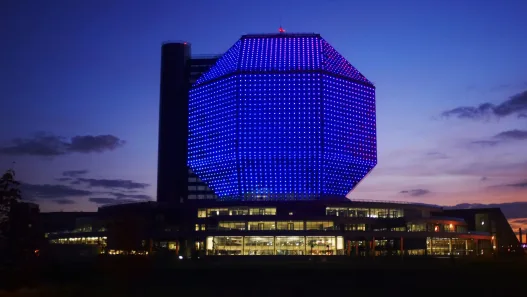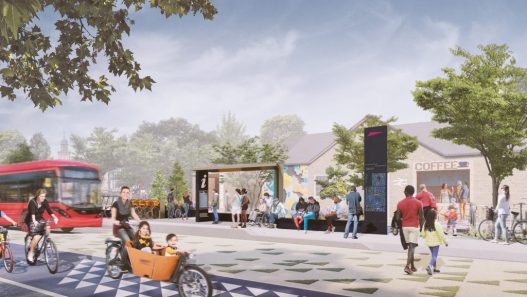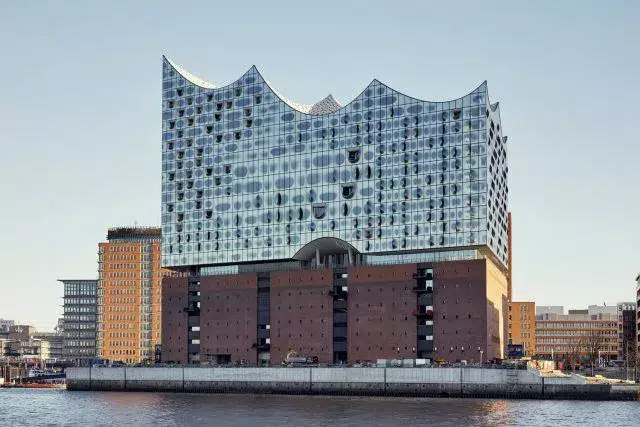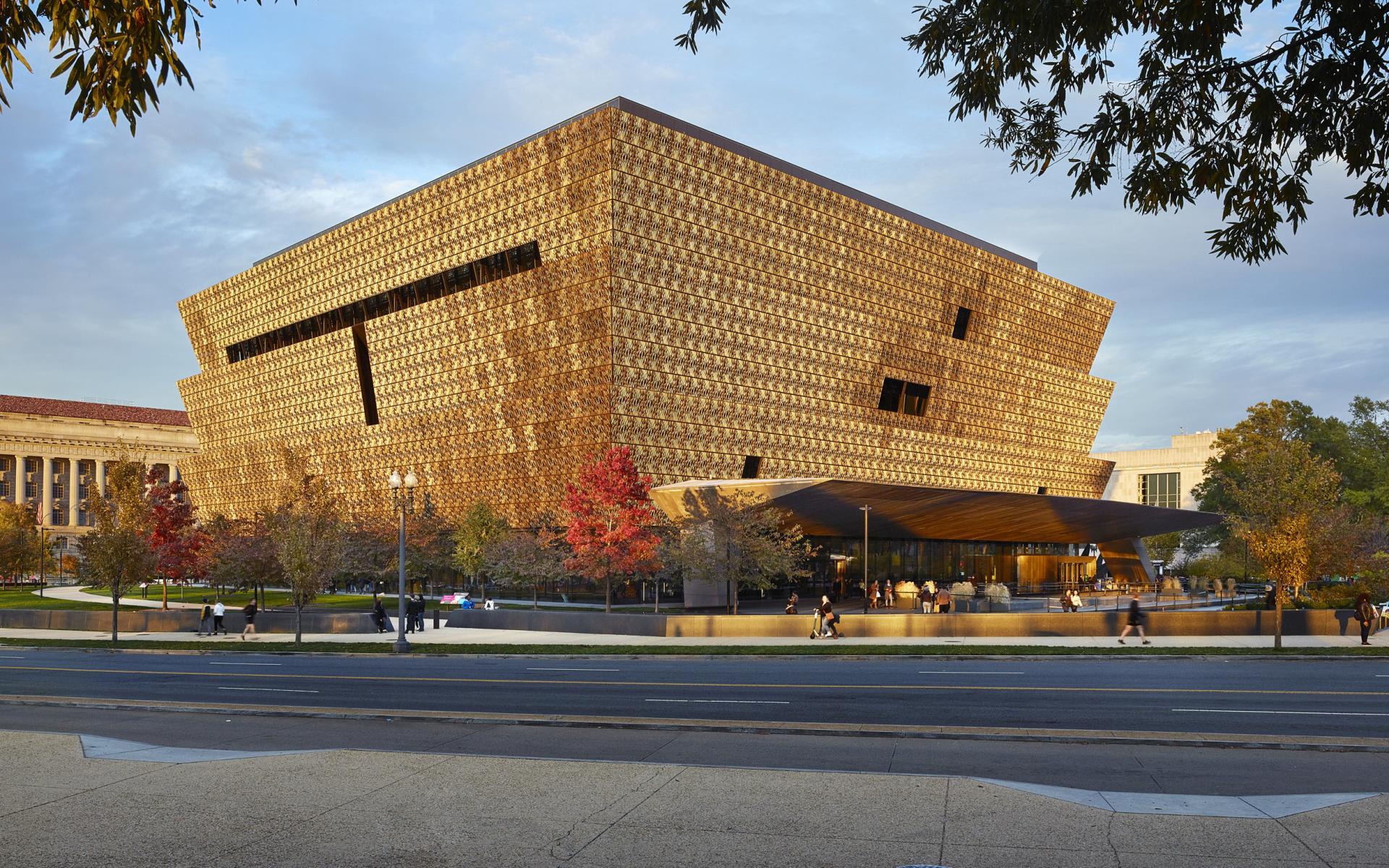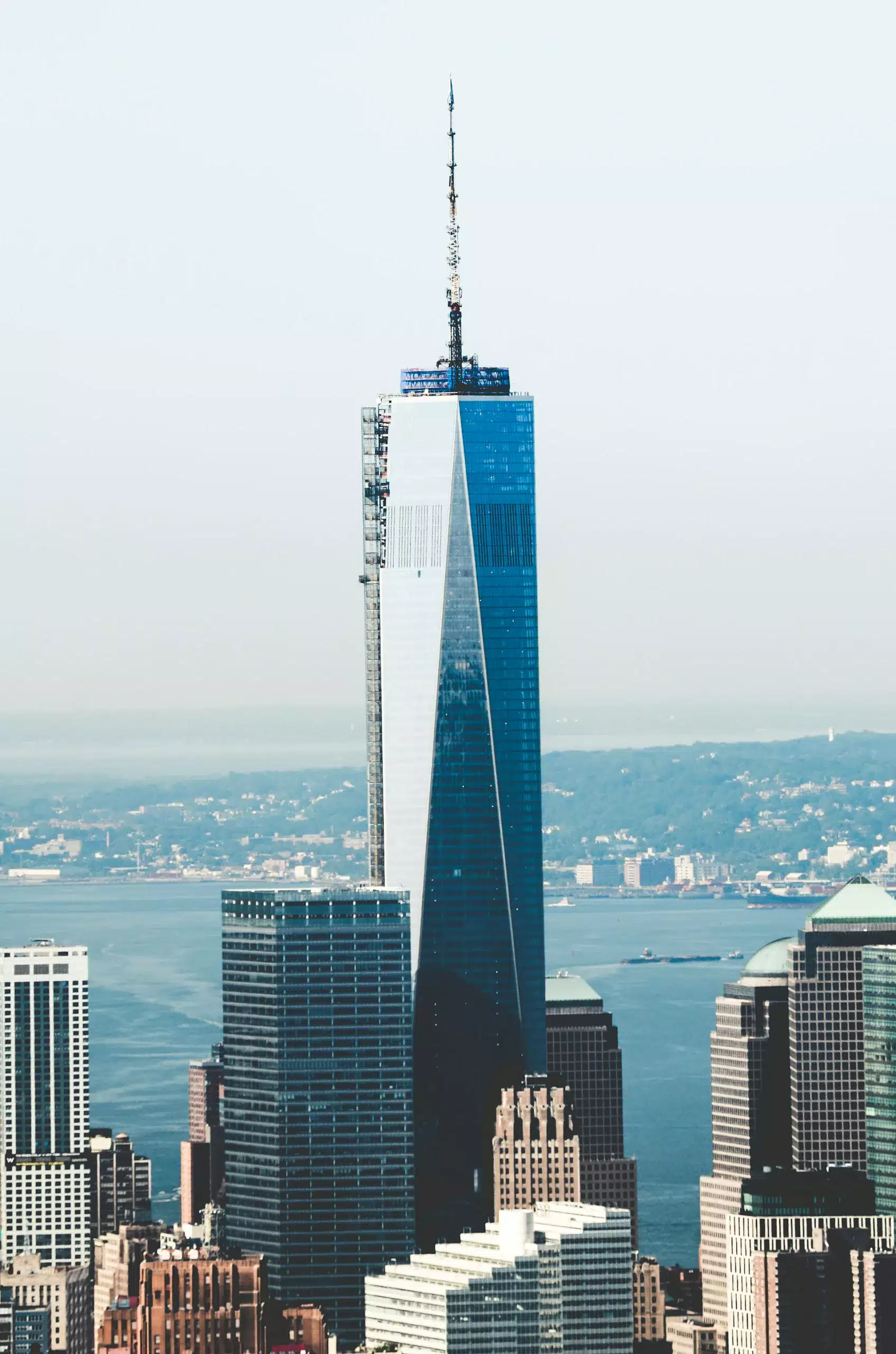In today’s world, increasing environmental awareness and the awareness that resources are limited are forcing the architecture and construction industry to undergo a radical transformation. Sustainable design is becoming more than just a trend, it is becoming the basic building block of modern buildings. This concept brings together elements such as energy efficiency, the use of environmentally friendly materials, water saving and waste management, aiming to both minimize environmental impacts and improve quality of life.
Sustainable design in modern buildings not only offers an environmentally sensitive approach, but also supports economic and social sustainability. Reducing energy costs saves money in the long run, while optimizing natural light and ventilation systems improves the health and comfort of building occupants. In this article, we will explore in detail the principles of sustainable design, how it is applied in modern architecture and what innovative solutions it can offer for future development. We will also include examples of successful sustainable buildings from around the world and the latest developments in this field.
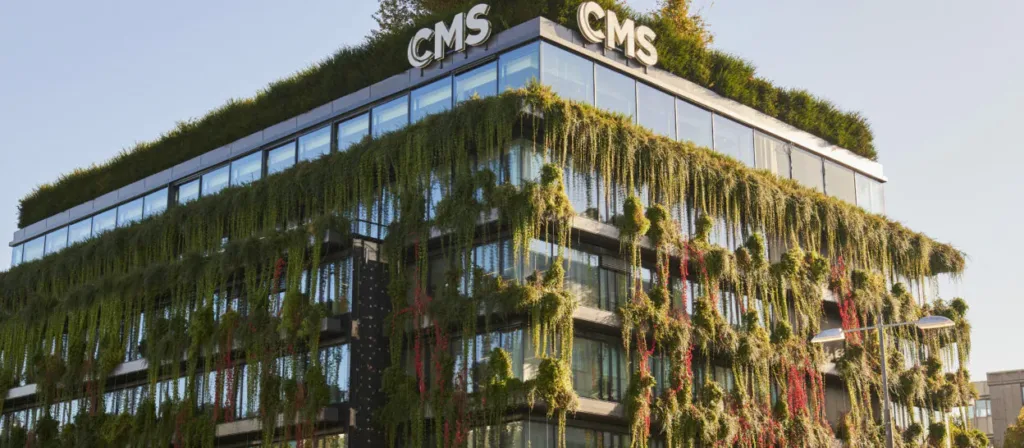
By understanding the importance of sustainable design, we can take responsibility for leaving a more livable world to future generations. In this journey, it is of great importance for both industry professionals and environmentally conscious individuals to discover how modern buildings are shaped by sustainability principles and how the challenges encountered in this process can be overcome. Let’s step into the construction of a sustainable future together.
Energy Efficiency
In today’s world where environmental concerns are at the forefront, it is crucial to incorporate sustainable design strategies into the construction of modern buildings. One of the key elements of sustainable design is energy efficiency. By implementing energy efficient practices, we can reduce our carbon footprint, conserve natural resources and create healthier and more comfortable living and working environments.
Building Orientation and Insulation
One of the key strategies for energy-efficient building design is to optimize the orientation of the building. By aligning the building to the sun’s path, we can maximize natural lighting and reduce the need for artificial lighting during the day. This not only saves energy, but also creates a more pleasant and productive indoor environment.



Furthermore, proper insulation plays an important role in maintaining energy efficiency. Insulation helps regulate the temperature inside the building, reducing the need for excessive heating or cooling. By using high-quality insulation materials and techniques, we can minimize heat transfer through walls, floors and roofs, resulting in lower energy consumption and lower utility bills.
Energy Efficient Windows and Doors
Windows and doors are essential components of every building and can significantly affect energy efficiency. By using energy-efficient windows and doors, we can minimize heat gain or loss, improve thermal comfort and reduce dependence on artificial heating and cooling systems.
Energy-efficient windows are designed with advanced glazing technologies that can effectively control the amount of heat and light entering the building. Low-emissivity (low-e) coatings, multiple panes and gas-filled gaps between panes are some of the features that improve the energy performance of windows.

Similarly, energy-efficient doors are constructed with materials that provide excellent insulating properties. They are designed to minimize air leakage and prevent drafts, ensuring that the indoor temperature remains constant and comfortable.
Lighting and HVAC Systems
Lighting and HVAC (Heating, Ventilation and Air Conditioning) systems contribute significantly to energy consumption in buildings. By adopting energy-efficient lighting solutions and optimizing HVAC systems, we can achieve significant energy savings.
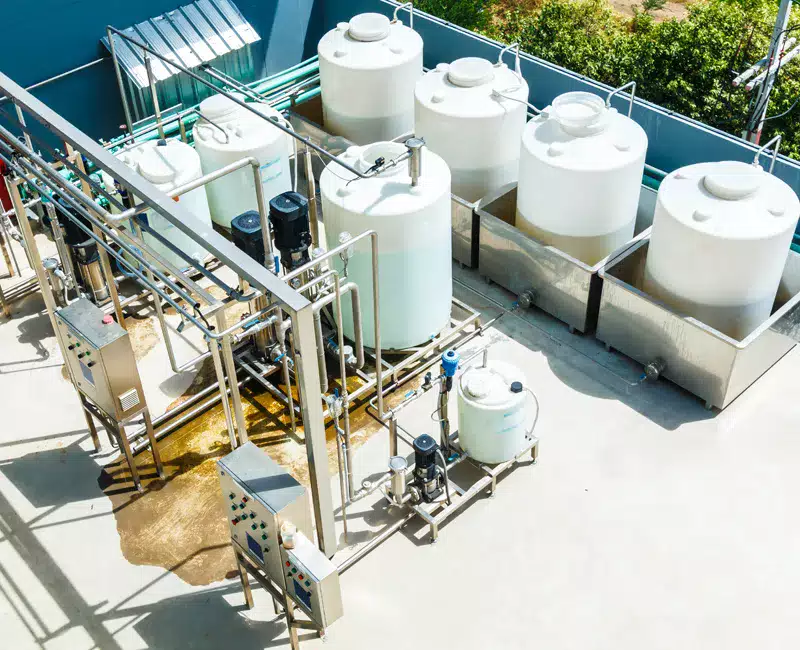
In terms of lighting, LED (Light Emitting Diode) technology has revolutionized the industry. LED lights are highly energy efficient and consume significantly less electricity compared to traditional incandescent or fluorescent lights. They also have a longer lifespan, which reduces the frequency of replacement and further minimizes waste.
When it comes to HVAC systems, proper design and regular maintenance are essential for energy efficiency. This includes selecting the right size equipment, using programmable thermostats and ensuring that the ductwork is properly insulated and sealed. Furthermore, the use of energy recovery ventilation systems can further improve the efficiency of HVAC systems by recovering and reusing heat or coolness from the exhaust air.
Choosing Sustainable Materials for Modern Buildings
When it comes to sustainable building design, material selection plays a crucial role. Choosing the right materials can significantly impact a building’s environmental footprint, from the extraction of raw materials to the manufacturing process and final disposal or recycling. By choosing sustainable materials, we can reduce resource depletion, minimize waste generation and promote a more circular economy. In this article, we will explore various sustainable material selection strategies, including the use of recycled materials, local and regional sourcing, and materials with low embodied energy.
Sustainable and Recycled Materials
Using sustainable and recycled materials is an effective way to reduce the environmental impact of building construction. These materials are often made from renewable resources or recycled content, diverting waste from landfills and conserving natural resources.
One example of sustainable materials is bamboo. Bamboo is a rapidly renewable resource that can be harvested within a few years, making it an excellent alternative to traditional hardwoods. It is durable, versatile and has a high strength-to-weight ratio, making it suitable for a variety of applications, including flooring, furniture and structural elements.
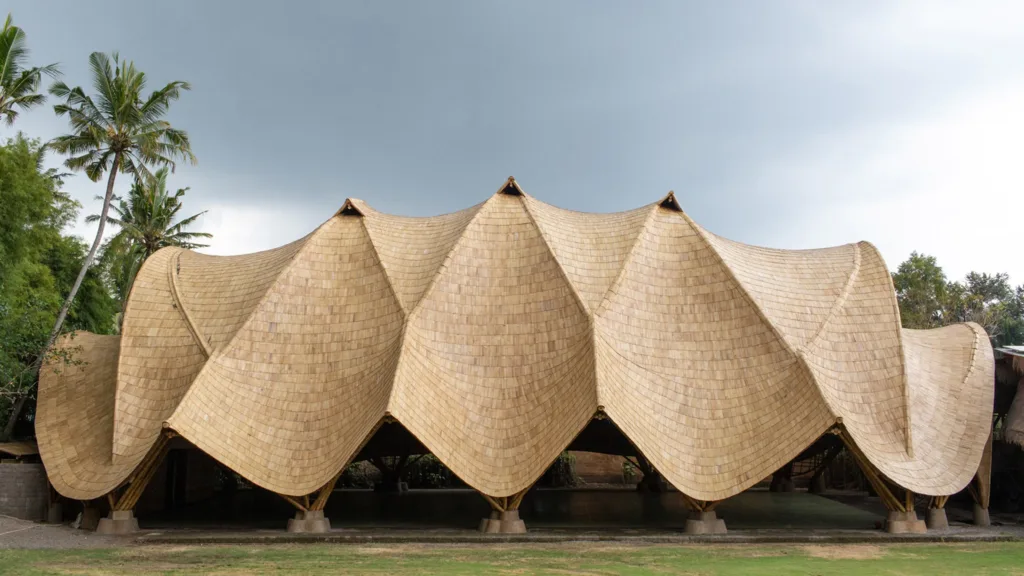
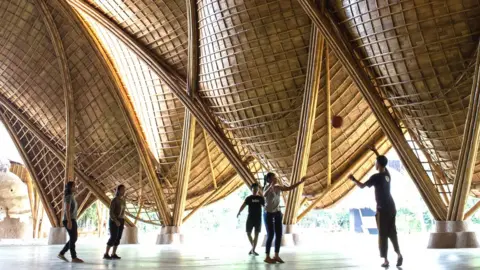
Recycled materials such as recycled steel and recycled concrete provide significant environmental benefits. Recycled steel reduces the need for new steel production, which is energy intensive and emits greenhouse gases. Similarly, the use of recycled concrete reduces the demand for virgin aggregates, conserving natural resources and reducing waste.
Local and Regional Ingredients
Another important aspect of sustainable material selection is the use of local and regional materials. Sourcing materials from nearby locations shortens transportation distances, minimizing carbon emissions associated with long-distance transportation.
Using locally sourced timber reduces the carbon footprint compared to importing timber from distant regions. It supports local economies, promotes responsible forestry practices and ensures the use of sustainable wood resources.
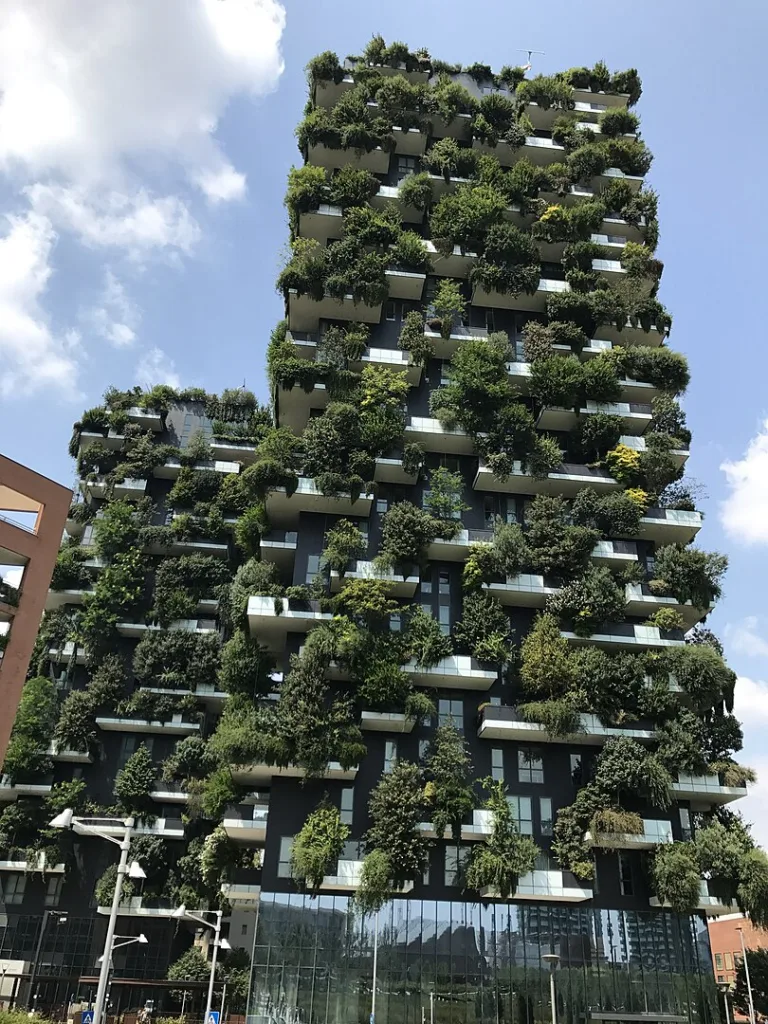
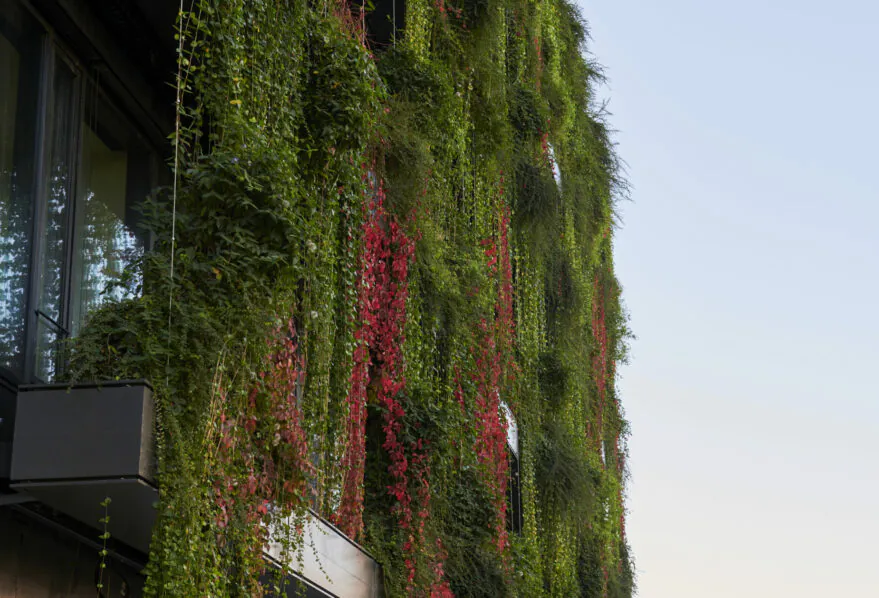
Similarly, using regional stone or clay for building materials reduces the energy required for transportation and supports local industries. By prioritizing local and regional materials, we can reduce environmental impact and contribute to the resilience and sustainability of surrounding communities.
Materials with Low Embedded Energy
Embodied energy refers to the total energy consumed throughout the life cycle of a material, including extraction, production, transportation, installation and disposal. Selecting materials with low embodied energy helps to minimize a building’s energy footprint.
An example of a material with low embodied energy is rammed earth. Rammed earth construction involves compressing layers of soil in formwork to create load-bearing walls. It is a sustainable and energy-efficient technique that uses locally available soil and requires minimal processing and transportation.
Another example is straw bale construction. Straw bales are a by-product of agricultural processes and can be used as building material. They have excellent insulating properties and reduce the need for additional insulation materials. Straw bale construction is energy efficient, cost-effective and promotes the use of renewable resources.
Achieving Healthy Indoor Air Quality in Modern Buildings
Indoor air quality (IAQ) is a very important aspect of building design that directly affects the health and well-being of building occupants. Poor IAQ can lead to a variety of health problems, including respiratory issues, allergies and even long-term health effects. In modern buildings, various strategies and technologies are available to improve IAQ and create a healthier indoor environment. In this article, we will examine three key approaches to achieving healthy IAQ: natural ventilation and air filtration, the use of low-VOC paints and coatings, and the implementation of air quality monitoring and control systems.
Natural Ventilation and Air Filtration
Natural ventilation is an effective way to improve IAQ by bringing in fresh outdoor air and removing stale indoor air. It helps dilute indoor pollutants and maintains a healthy airflow inside the building. By using operable windows, skylights or vents, natural ventilation can be optimized to provide continuous fresh air.
In addition to natural ventilation, air filtration systems play a vital role in removing airborne pollutants and allergens. High efficiency particulate air (HEPA) filters are commonly used in HVAC systems to capture particles as small as 0.3 microns, including dust, pollen and pet dander. These filters help improve IAQ by reducing the presence of allergens and other harmful particles in the air.
Low VOC Paints and Coatings
Volatile organic compounds (VOCs) are chemicals emitted by various building materials, including paints, adhesives and varnishes. These compounds can have adverse health effects such as eye and respiratory irritation, headaches, and can even contribute to long-term health problems. To reduce the impact of VOCs on IAQ, it is crucial to choose low-VOC paints and varnishes.
Low VOC paints and varnishes have significantly lower levels of harmful chemicals compared to conventional products. They emit fewer pollutants into the air, improving IAQ and creating a healthier indoor environment. When choosing paints and varnishes, look for products labeled as low VOC or zero VOC to ensure minimal emissions of harmful chemicals.
Air Quality Monitoring and Control
The implementation of air quality monitoring and control systems allows IAQ parameters to be monitored in real time and ventilation rates to be adjusted accordingly. These systems use sensors to measure various factors, including temperature, humidity, carbon dioxide (CO2) levels and volatile organic compounds (VOCs). By continuously monitoring IAQ, building operators can detect potential problems and take proactive measures to ensure a healthy indoor environment.

Advanced air quality control systems can automatically adjust ventilation rates based on IAQ parameters. For example, if CO2 levels rise above a certain threshold, the system can increase the ventilation rate to bring in more fresh air. This ensures that building occupants always receive clean, fresh air, contributing to their overall well-being.
Minimizing Waste: Recycling, Reusing and Reimagining for a Sustainable Future
Waste reduction is a critical aspect of sustainable building design. By implementing recycling and composting programs, minimizing construction waste, and reusing and repurposing materials, we can significantly reduce the environmental impact of construction projects. In this article, we will explore these strategies in detail and highlight their importance in creating a more sustainable future.
Recycling and Composting Programs
Implementing recycling and composting programs on construction sites is an effective way to divert waste from landfills and promote resource conservation. Recycling involves collecting and processing materials such as paper, plastics, metals and glass that can be turned into new products. Composting involves separating organic waste materials such as food scraps and garden clippings into nutrient-rich compost that can be used to enrich soil.
By providing designated recycling and compost bins, training employees on proper waste segregation and partnering with local recycling and composting facilities, construction projects can significantly reduce the amount of waste sent to landfills. This not only conserves resources, but also helps to reduce the environmental impacts associated with waste disposal.
Minimizing Construction Waste
Minimizing construction waste is another important step in waste reduction. Construction sites generate significant amounts of waste, including excess material, packaging and demolition debris. By implementing proactive measures such as careful planning, efficient materials management and precise construction techniques, we can minimize waste generation and optimize resource use.
Here are some strategies to minimize construction waste:
- Inventory Management: Keeping track of supplies and ordering only what is needed can help prevent overstocking and minimize waste.
- Prefabrication: Prefabricating components off-site reduces the amount of waste generated during construction and allows for more precise material handling.
- Lean Construction: Adopting lean construction principles such as just-in-time delivery and efficient work sequencing can minimize waste and improve overall project efficiency.
By adopting these strategies, construction projects can significantly reduce waste generation, conserve resources and minimize the environmental impacts of the construction process.
Reuse and Redesign of Materials
Reusing and repurposing materials is an excellent way to minimize waste and extend the life of resources. Instead of throwing materials away, they can be salvaged, refurbished or reused for new applications. This not only reduces waste, but also saves energy and resources needed to produce new materials.
Here are some examples of reuse and redesign of materials in construction:
- Reclaimed Wood: Salvaging wood from old buildings and incorporating it into new construction projects adds character and reduces the demand for virgin timber.
- upcycling: Upcycling involves turning waste materials into products of higher value. For example, turning discarded glass bottles into decorative lighting fixtures or reusing shipping containers as modular housing units.
- Deconstruction: Deconstruction involves the careful dismantling of buildings to salvage materials for reuse. This approach allows for the recovery of valuable materials such as bricks, metals and fixtures.


By adopting the principles of reuse and repurposing, construction projects can contribute to the circular economy, reduce waste generation and promote resource conservation.
Sustainable Site Selection: Transforming Landscapes for a Greener Future
Sustainable site selection is a crucial aspect of responsible and environmentally sound development. By considering factors such as brownfield redevelopment, urban infill development and greenfield development, we can transform landscapes in a way that minimizes environmental impact and maximizes sustainability. In this article, we will explore these concepts in detail and highlight their importance in creating a greener future.
Brownfield Redevelopment
Brownfield redevelopment refers to the revitalization of previously contaminated or underutilized sites. These sites often have a history of industrial or commercial use and leave behind environmental problems. By redeveloping brownfields, we can reclaim and redesign these sites, reducing pressure on undeveloped land and promoting sustainable growth.
One of the most important benefits of brownfield redevelopment is the remediation of contaminated land. Through careful assessment and cleanup, these areas can be transformed into safe and productive areas. In addition, brownfield redevelopment can help revitalize communities, create jobs and stimulate economic growth in areas that may have been neglected.

Urban Infill Development
Urban infill development involves the use of vacant or underutilized land in existing urban areas. Instead of expanding into undeveloped land on the outskirts of cities, infill development focuses on maximizing the use of existing infrastructure and resources. This approach helps to combat urban sprawl, protect natural habitats and promote sustainable transportation options.


By redeveloping vacant land, abandoned buildings or parking lots, urban infill development can revitalize neighborhoods, increase housing options and promote walkability. It also reduces the need for long commutes, lowering carbon emissions and promoting a more sustainable lifestyle.
Green Space Development
Greenfield development refers to the development of previously undeveloped land, typically on the outskirts of urban areas. Greenfield development presents opportunities for new construction and design, but also challenges in terms of environmental impact and resource consumption.
To ensure sustainable green space development, it is crucial to consider factors such as land conservation, biodiversity protection and efficient land use planning. By incorporating green infrastructure such as parks, green spaces and sustainable drainage systems, green space developments can improve residents’ quality of life, promote biodiversity and reduce the environmental impact of new construction.
Innovating the Future: Exploring Building Technologies for Sustainable Construction
Innovations in construction technology are revolutionizing the way we design, construct and operate buildings. By embracing innovative technologies such as Building Information Modeling (BIM), energy modeling and simulation, and smart building technologies, we can create more sustainable and efficient structures. In this article, we will examine these cutting-edge technologies and explore their impact on the construction industry.
Building Information Modeling (BIM)
Building Information Modeling (BIM) is a digital representation of the physical and functional characteristics of a building. It allows architects, engineers and construction professionals to collaborate and visualize throughout the entire building lifecycle, from design and construction to operation and maintenance. BIM enables the integration of various data sources, facilitates conflict detection and improves project coordination.

The benefits of BIM extend beyond the design and construction phase. It enables better energy analysis, cost estimation and facilities management. By simulating and optimizing building performance before construction begins, BIM helps reduce waste, increase energy efficiency and improve overall project sustainability.
Energy Modeling and Simulation
Energy modeling and simulation tools are invaluable in designing energy-efficient buildings. These tools use advanced algorithms to analyze a building’s energy consumption, predict its performance and identify opportunities for improvement. By simulating different design scenarios, architects and engineers can optimize energy efficiency, reduce greenhouse gas emissions and lower operating costs.

Energy modeling and simulation tools consider factors such as building orientation, insulation, HVAC systems and renewable energy integration. They provide insights into energy consumption throughout a building’s life cycle, enabling informed decision-making and the implementation of sustainable design strategies.
Smart Building Technologies
Smart building technologies harness the power of the Internet of Things (IoT) to improve building performance, occupant comfort and energy efficiency. These technologies include the integration of sensors, automation systems and data analytics to monitor and control various building systems, including lighting, HVAC, security and occupancy.

By collecting and analyzing real-time data, smart building technologies optimize energy use, improve indoor air quality and enable predictive maintenance. For example, occupancy sensors can adjust lighting and HVAC settings based on occupancy levels, reducing energy waste. Smart meters can provide detailed energy consumption data, enabling building owners to make informed decisions about energy management.
Optimizing Building O&M for Sustainability
Building operations and maintenance play a crucial role in ensuring the long-term sustainability and efficiency of structures. By focusing on energy-efficient building operations, water conservation and management, and waste reduction and recycling, we can minimize environmental impact and promote sustainable practices. In this article, we will explore these key aspects of building operations and maintenance and their importance in creating a greener future.
Energy Efficient Building Operations
Energy efficient building operations involve implementing strategies and technologies to minimize energy consumption and maximize efficiency. This includes optimizing heating, ventilation and air conditioning (HVAC) systems, upgrading lighting to energy-efficient alternatives and using smart building automation systems.
By monitoring and controlling energy use, building operators can identify areas for improvement and implement energy saving measures. This can include programming HVAC systems to operate only when needed, using occupancy sensors to control lighting, and implementing energy management systems to monitor and analyze energy consumption data.
Energy-efficient building operations not only reduce greenhouse gas emissions and lower operating costs, but also create healthier and more comfortable indoor environments for building occupants.
Water Conservation and Management
Water conservation and management is essential for sustainable building operations. By implementing water-saving fixtures, such as low-flow toilets and faucets, and using smart irrigation systems, buildings can significantly reduce water consumption.
In addition, rainwater harvesting systems can collect and store rainwater for non-potable uses such as irrigation and toilet flushing. Graywater recycling systems can treat wastewater from sinks, showers and laundries and reuse it for irrigation.
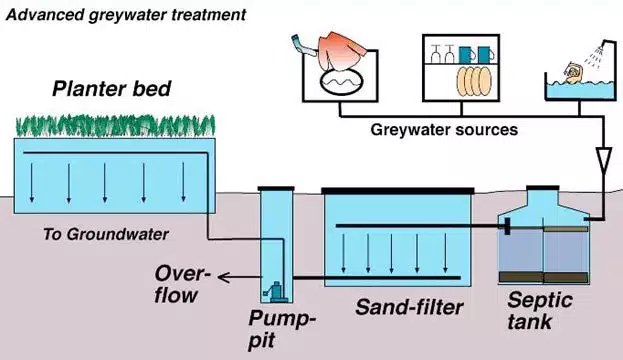
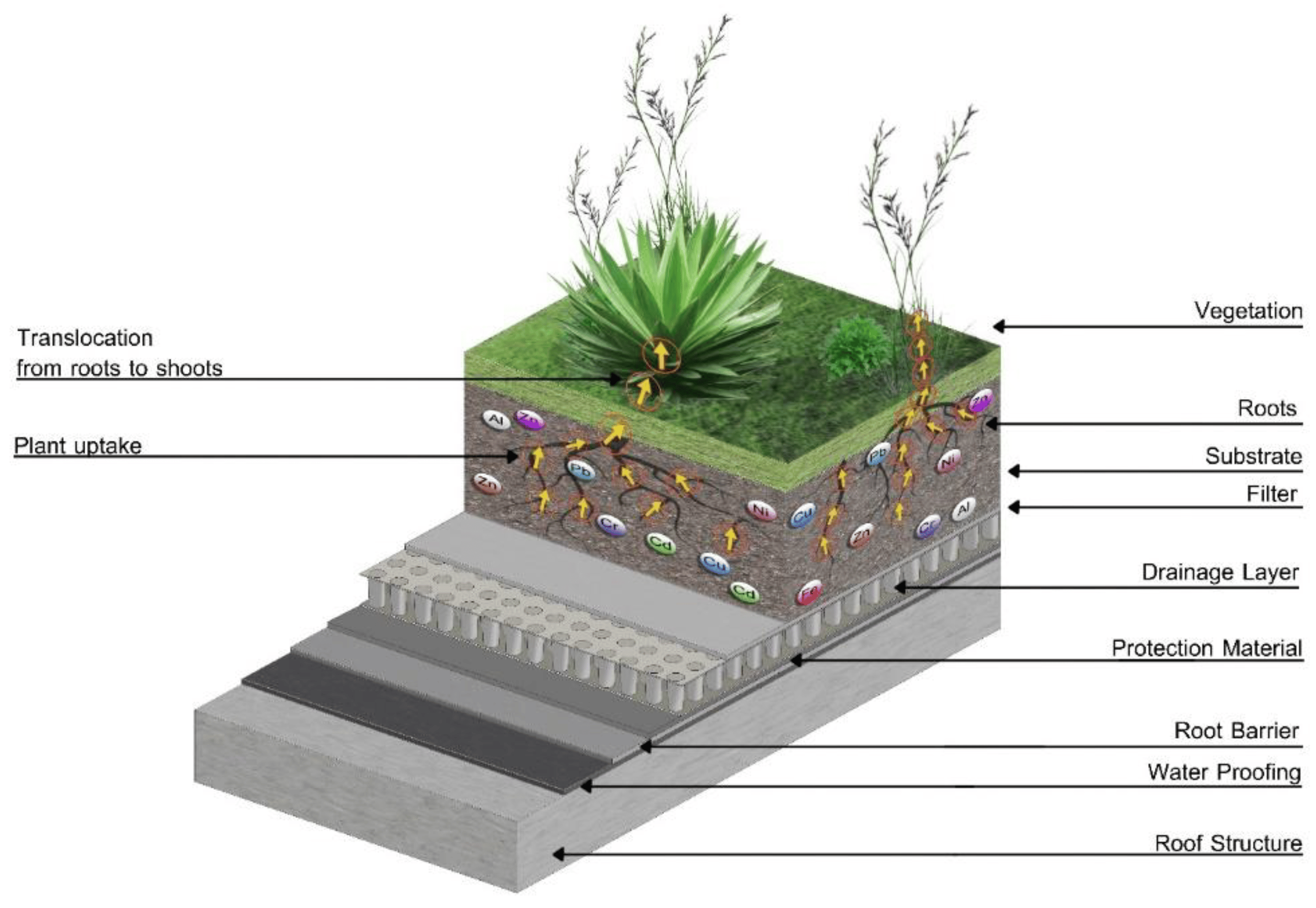
Effective water management also includes regular monitoring of water use, identifying leaks and implementing water-saving practices, such as educating building occupants on water conservation and implementing water-efficient landscaping practices.
Waste Reduction and Recycling
Waste reduction and recycling are vital components of sustainable building operations. By implementing waste management strategies, buildings can minimize the amount of waste sent to landfills and encourage the reuse and recycling of materials.
This can be achieved by implementing recycling programs, providing designated recycling bins throughout the building and educating occupants on proper waste segregation. In addition, buildings can adopt practices such as composting organic waste and implementing construction waste management plans to divert construction and demolition waste from landfills.
By reducing waste generation and promoting recycling, buildings contribute to resource conservation, reduce environmental pollution and support the circular economy.
Uncovering Success Stories: Case Studies in Sustainable Building Design
Sustainable building design is not just a concept; it is a reality that has been successfully implemented in various projects around the world. In this section, we will examine examples of successful sustainable building design, explore lessons learned and best practices, and discuss the future of sustainable building design. These case studies highlight the potential and impact of sustainable design in creating environmentally friendly and energy efficient structures.
Examples of Successful Sustainable Building Design
1. The Edge, Amsterdam, Netherlands
The Edge in Amsterdam is considered one of the most sustainable office buildings in the world. The building has innovative features such as smart lighting systems that adjust to occupancy and natural light levels, energy-efficient HVAC systems and solar panels that generate renewable energy. The building also uses rainwater harvesting and gray water recycling systems to reduce water consumption. The Edge has achieved the highest sustainability rating (BREEAM Outstanding) and serves as a benchmark for sustainable office design.
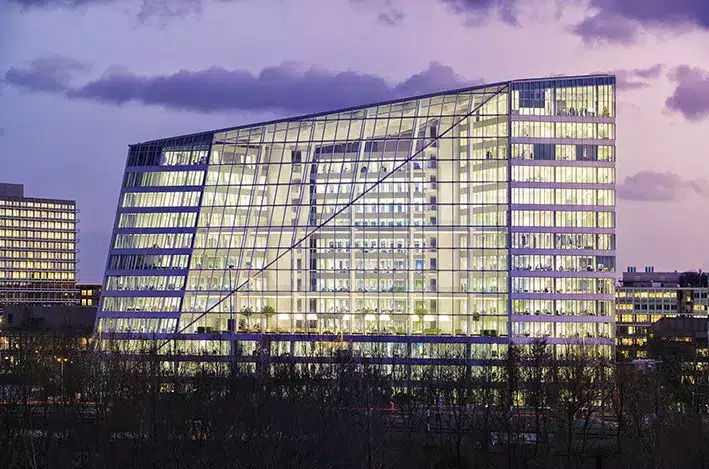
2. One Angel Square, Manchester, United Kingdom
One Angel Square, the headquarters of the Cooperative Group, is an exemplary sustainable building. It uses a combined heat and power (CHP) system that generates electricity and captures waste heat for heating and cooling. The building’s innovative double-skin facade maximizes natural light and minimizes heat loss. It also includes rainwater harvesting, smart lighting controls and a green roof. One Angel Square has achieved the highest BREEAM rating (Outstanding), demonstrating the potential of sustainable design in commercial buildings.

3. Bullitt Center, Seattle, Birleşik Devletler
Seattle’da bulunan Bullitt Center, sürdürülebilir tasarım ilkelerinin yaşayan bir örneğidir. Net sıfır enerjili bir binadır ve güneş panelleri aracılığıyla tükettiği kadar enerji üretmektedir. Bina, enerji talebini azaltmak için doğal havalandırma ve gün ışığı gibi pasif tasarım stratejileri içermektedir. Ayrıca yağmur suyu hasadı, kompost tuvaletler ve gri su arıtma sistemi de bulunuyor. Bullitt Merkezi, yüksek performanslı, enerji tasarruflu binalar yaratmanın fizibilitesini göstermektedir.
Lessons Learned and Best Practices
The success of these sustainable building designs offers valuable lessons and best practices for future projects:
- Integrated Design Approach: Successful sustainable building design requires collaboration between architects, engineers, contractors and stakeholders from the early stages of the project. Integrated design ensures that sustainability goals are incorporated into every aspect of the building’s design and operation.
- Passive Design Strategies: Passive design strategies such as optimizing building orientation, maximizing natural light and taking advantage of natural ventilation can significantly reduce energy consumption and improve occupant comfort.
- Energy Efficient Systems: Implementing energy-efficient systems such as smart lighting, HVAC controls and renewable energy generation can greatly reduce a building’s environmental impact and operating costs.
- Water Conservation Measures: Incorporating water-saving fixtures, rainwater harvesting systems and graywater recycling can minimize water consumption and promote sustainable water management.
- Life Cycle Assessment: It is essential to consider the life cycle impacts of materials and systems used in construction. Selecting sustainable materials and minimizing waste during construction and demolition contributes to the overall sustainability of a building.
The Future of Sustainable Building Design
The future of sustainable building design holds enormous potential for innovation and progress. Here are some trends and developments to watch out for:
- Net-Zero Energy Buildings: The concept of net-zero energy buildings, where the energy produced on-site is equal to or greater than the energy consumed, will become more common. Advances in renewable energy technologies and energy storage systems will drive the adoption of net-zero energy designs.
- Smart Building Technologies: The integration of smart building technologies such as IoT sensors, data analytics and automation systems will optimize building performance, increase energy efficiency and improve occupant comfort.
- Circular Economy Principles: Adopting circular economy principles in building design and construction will lead to a more sustainable and circular building industry by promoting resource efficiency, waste reduction and reuse of materials.
- Biophilic Design: Biophilic design that incorporates natural elements and connections to nature will gain importance. This design approach has been shown to improve occupant well-being, productivity and overall satisfaction.
- Resilient and Adaptive Design: With the increasing frequency of extreme weather events and climate change impacts, resilient and adaptive design strategies will become essential to ensure the long-term sustainability and resilience of buildings.
In conclusion, the success stories of sustainable building design exemplify the potential and impact of environmentally sound construction practices. By learning from these examples, adopting best practices and considering future trends, we can continue to push the boundaries of sustainable building design and create a greener and more sustainable future.
Frequently Asked Questions (FAQ)
How can energy-efficient building operations benefit both the environment and occupants?
Energy efficient building operations reduce energy consumption, lower greenhouse gas emissions and create healthier and more comfortable indoor environments for building occupants.
What are some examples of water saving strategies in building operations?
Water saving strategies include the implementation of water-efficient fixtures, the use of smart irrigation systems, rainwater harvesting, graywater recycling and regular monitoring of water use.
How can buildings promote waste reduction and recycling?
Buildings can promote waste reduction and recycling by implementing recycling programs, providing designated recycling bins, educating occupants on waste segregation, composting organic waste and implementing construction waste management plans.
What are the long-term benefits of implementing sustainable building operation and maintenance practices?
Implementing sustainable building operation and maintenance practices reduces environmental impacts, lowers operating costs, conserves resources and promotes a greener and more sustainable future.
How can building operators and occupants contribute to sustainable building operations?
Building operators and occupants can contribute to sustainable building operations by actively participating in energy saving practices, water conservation efforts, waste reduction and recycling initiatives.
How can sustainable design strategies benefit modern buildings?
Sustainable design strategies can benefit modern buildings by reducing energy consumption, lowering utility bills, improving indoor air quality and creating more comfortable and healthier living and working environments.
What is the importance of building orientation in energy efficient design?
Building orientation plays a crucial role in energy efficient design, as it makes the best use of natural light, reducing the need for artificial lighting during the day and saving energy.
How do energy-efficient windows and doors contribute to sustainable building design?
Energy-efficient windows and doors minimize heat gain or loss, improve thermal comfort and reduce reliance on artificial heating and cooling systems, saving energy and reducing environmental impact.
What are energy-efficient lighting solutions for modern buildings?
LED (Light Emitting Diode) lights are highly energy efficient and last longer than traditional incandescent or fluorescent lights. They consume less electricity and contribute to significant energy savings.
How can HVAC systems be optimized for energy efficiency?
Optimizing HVAC systems for energy efficiency includes proper design, regular maintenance, selection of correctly sized equipment, use of programmable thermostats, and incorporation of energy recovery ventilation systems to recover and reuse heat or cold from exhaust air.
What is natural ventilation and how does it improve indoor air quality?
Natural ventilation is the process of using outside air to circulate fresh air inside a building. It improves indoor air quality by helping to dilute indoor pollutants and maintain a healthy airflow.
What are HEPA filters and how do they improve IAQ?
HEPA filters are highly efficient particulate air filters that capture particles as small as 0.3 microns. They improve indoor air quality by helping to remove dust, pollen and other airborne pollutants.
What are low-VOC paints and varnishes and why are they important for IAQ?
Low VOC paints and varnishes reduce levels of volatile organic compounds that can be harmful to human health. By using low-VOC products, IAQ is improved and the risk of exposure to harmful chemicals is minimized.
What is the role of air quality monitoring and control systems in maintaining healthy IAQ?
Air quality monitoring and control systems continuously monitor IAQ parameters and adjust ventilation rates accordingly. This ensures that building occupants receive clean, fresh air, contributing to their well-being.
How can building occupants contribute to maintaining healthy IAQ?
Building occupants can contribute to healthy IAQ by avoiding smoking indoors, properly maintaining HVAC systems, and immediately reporting signs of poor air quality to building management.
What are the benefits of implementing recycling and composting programs on construction sites?
Implementing recycling and composting programs helps divert waste from landfills, conserve resources and reduce environmental impacts associated with waste disposal.
How can construction projects minimize waste generation?
Construction projects can minimize waste generation through careful planning, efficient materials management and the adoption of lean construction principles.
What are some strategies for reuse and redesign of materials in construction?
Some strategies for reusing and redesigning materials include salvaging reclaimed wood, recycling waste materials into new products, and deconstructing buildings to salvage valuable materials.
How does reusing and redesigning materials contribute to a sustainable future?
Reusing and redesigning materials reduces waste, saves energy and resources and promotes a circular economy, leading to a more sustainable future.
What is the role of minimizing construction waste in sustainable building design?
Minimizing construction waste is crucial in sustainable building design as it optimizes resource use, reduces waste generation and minimizes the environmental impact of the construction process.
What is the importance of redeveloping brownfield sites?
Brownfield redevelopment allows previously contaminated or underutilized sites to be revitalized, reducing pressure on undeveloped land and promoting sustainable growth.
How does urban infill development contribute to sustainability?
Urban infill development maximizes the use of existing infrastructure, reduces urban sprawl, promotes walkability and reduces carbon emissions by minimizing the need for long commutes.
What are some of the considerations for sustainable green space development?
Sustainable green space development includes factors such as land conservation, biodiversity protection and the inclusion of green infrastructure to reduce environmental impact.
How does brownfield redevelopment benefit communities?
Redeveloping brownfield sites revitalizes communities, creates jobs, stimulates economic growth and transforms contaminated areas into safe and productive spaces.
Why is it important to prioritize sustainable site selection?
Sustainable site selection minimizes environmental impacts, protects natural habitats, promotes resource conservation and contributes to a greener and sustainable future.
What is Building Information Modeling (BIM) and how does it benefit the construction industry?
Building Information Modeling (BIM) is a digital representation of a building’s features. It improves collaboration, facilitates conflict detection and enables better energy analysis, cost estimation and facilities management.
How do energy modeling and simulation tools contribute to sustainable building design?
Energy modeling and simulation tools analyze a building’s energy consumption, predict its performance and identify opportunities for improvement. They help optimize energy efficiency, reduce emissions and lower operating costs.
What are smart building technologies and how do they improve building performance?
Smart building technologies integrate sensors, automation systems and data analytics to monitor and control building systems. They optimize energy use, improve indoor air quality and enable predictive maintenance.
How can BIM, energy modeling and smart building technologies work together for sustainable construction?
BIM provides a platform for integrating energy modeling and simulation tools, enabling informed decision-making during the design and construction phases. Smart building technologies increase the operational efficiency and sustainability of buildings.
What are the long-term benefits of adopting innovative technologies in the construction industry?
Adopting innovative technologies improves project coordination, reduces waste, optimizes energy efficiency, increases occupant comfort and lowers operating costs, resulting in more sustainable and efficient buildings.
What are sustainable materials?
Sustainable materials are those that are produced from renewable resources, have a low environmental impact and promote resource conservation. Examples include bamboo, recycled steel and recycled concrete.
What are the benefits of using recycled materials in building construction?
Using recycled materials reduces waste generation, conserves natural resources and minimizes energy and carbon emissions associated with the production of new materials.
Why is local and regional sourcing important in the selection of sustainable materials?
Local and regional sourcing reduces transportation distances, lowers carbon emissions, supports local economies and promotes responsible resource management.
What is embodied energy and why is it important?
Embodied energy refers to the total energy consumed over the life cycle of a material. Choosing materials with low embodied energy helps minimize a building’s energy footprint and reduces its environmental impact.
What are some examples of materials with low embodied energy?
Examples of materials with low embodied energy include compacted soil, straw bales and adobe. These materials use locally available resources and require minimal processing and transportation.




